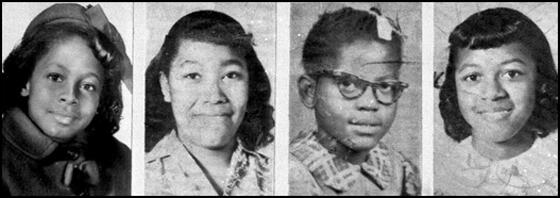On this day on 15th September
On this day in 1649 Titus Oates is born. His father was a Anabaptist preacher who had been a New Model Army chaplain during the Civil War. Educated at Caius College, Cambridge, he became an Anglican minister but was dismissed after being charged with "drunken blasphemy". He then became a chaplain on a ship but was dismissed for committing an homosexual act.
In 1678 Titus Oates announced that he had discovered a Catholic plot to kill Charles II. Oates claimed that Charles was to be replaced by his Roman Catholic brother, James. He went on to argue that after James came to the throne Protestants would be massacred in their thousands.
This announcement made Catholics more unpopular than ever, and eighty of them were arrested and accused of taking part in the plot. Several were executed, including Oliver Plunkett, the Archbishop of Armagh, before it was revealed that Titus Oates had been lying.
In 1683 Oates was imprisoned and fined £100,000 for calling James, Duke of York a traitor. In May 1685 Oates was found guilty of perjury he was pilloried, whipped and imprisoned for life.
Oates was released from prison in December, 1688, as a result of the Glorious Revolution.
Titus Oates died on 13th July 1705.
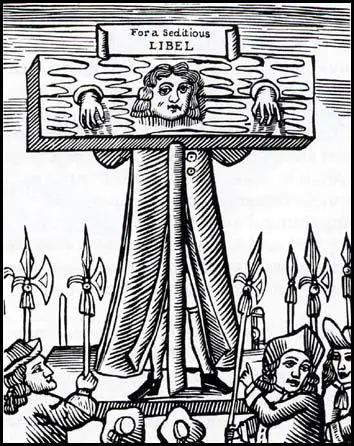
On this day in 1844, it was reported by the St. Louis Republic that a eight year old black slave had been whipped to death.
On Friday last the coroner held an inquest at the house of Judge Dunica, a few miles south of the city, over the body of a negro girl, about 8 years of age, belonging to Mr. Cordell. The body exhibited evidence of the most cruel whipping and beating we have ever heard of. The flesh on the back and limbs was beaten to a jelly -- one shoulder-bone was laid bare -- there were several cuts, apparently from a club, on the head -- and around the neck was the indentation of a cord, by which it is supposed she had been confined to a tree. She had been hired by a man by the name of Tanner, residing in the neighborhood, and was sent home in this condition. After coming home, her constant request, until her death, was for bread, by which it would seem that she had been starved as well as unmercifully whipped. The jury returned a verdict that she came to her death by the blows inflicted by some persons unknown whilst she was in the employ of Mr. Tanner. Mrs. Tanner has been tried and acquitted."
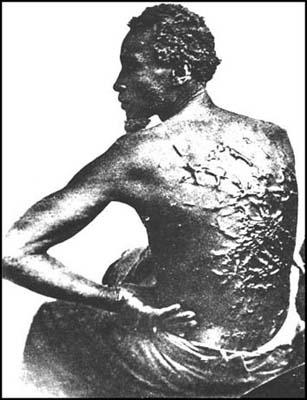
On this day in 1916 tanks were used in battle for the first time during the Battle of the Somme. The production of Little Willie by Lieutenant Walter G. Wilson and William Tritton in the late summer of 1915 revealled several technical problems. The two men immediately began work on an improved tank. Mark I, nicknamed Mother, was much longer than the first tank they made. This kept the centre of gravity low and the extra length helped the tank grip the ground. Sponsons were also fitted to the sides to accommodate two naval 6-pound guns. In trials carried out in January 1916 the tank crossed a 9ft. wide trench with a 6ft. 6in. parapet and convinced watchers of its "obstacle-crossing ability".
According to Colonel Charles Repington, that the government's greatest advocate of tanks, Winston Churchill, "wanted them to wait until there were something like a thousand Tanks, and then to win a great battle with them as a surprise". This was acceptable to Sir Douglas Haig, Commander-in Chief of the British Army, as he had doubts about the value of tanks. However, after failing to break through German lines at the Somme, Haig gave orders that tanks that had reached the Western Front, should be used at Flers-Coucelette on 15th July, 1916.
It was not until 28th September, 1916, that the newspapers were allowed to report the use of tanks on the Western Front in France. The Manchester Guardian reported: "The British army has struck the enemy another heavy blow north of the Somme... Armoured cars (tanks) working with the infantry were the great surprise of this attack. Sinister, formidable, and industrious, these novel machines pushed boldly into No Man's Land, astonishing our soldiers no less than they frightened the enemy."
The Daily Chronicle also carried news of tanks that day. "Over our own trenches in the twilight of the dawn those motor-monsters had lurched up, and now it came crawling forward to the rescue, cheered by the assaulting troops, who called out words of encouragement to it and laughed, so that some men were laughing even when bullets caught them in the throat. 'Creme de Menthe' was the name given to this particular creature, and it waddled forward right over the old German trenches. There was a whip of silence from the enemy. Then, suddenly, their machine-gun fire burst out in nervous spasms and splashed the sides of 'Creme de Menthe'. But the tank did not mind. The bullets fell from its sides harmlessly. From its sides came flashes of fire and a hose of bullets, and then it trampled around over machine emplacements 'having a grand time', as one of the men said with enthusiasm. It crushed the machine-guns under its heavy ribs, and killed machine-gun teams with deadly fire. The infantry followed in and took the place after this good help, and then advanced again round the flanks of the monster."
In reality, the tanks were not a great success the first time they were used. Of the 59 tanks in France, only 49 were considered to be in good working order. Of these, 17 broke down on the way to their starting point at Flers. The sight of the tanks created panic and had a profound effect on the morale of the German Army. Colonel John Fuller, chief of staff of the Tank Corps, was convinced that these machines could win the war and persuaded Sir Douglas Haig to ask the government to supply him with another 1,000 tanks. Basil Liddell Hart argues the main problem was that "Swinton's memorandum laid down a number of conditions which were disregarded in September, 1916... The sector for tank attack was to be carefully chosen to comply with the powers and limitations of the tanks."
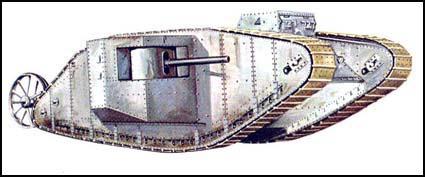
On this day in 1917 Russia proclaimed a republic by Alexander Kerensky. Alfred Knox, the British Military Attaché in Petrograd, also argued that he British should give full support to Kerensky: "There is only one man who can save the country, and that is Kerensky, for this little half-Jew lawyer has still the confidence of the over-articulate Petrograd mob, who, being armed, are masters of the situation. The remaining members of the Government may represent the people of Russia outside the Petrograd mob, but the people of Russia, being unarmed and inarticulate, do not count. The Provisional Government could not exist in Petrograd if it were not for Kerensky."
According to the American journalist, Lincoln Steffens: "Kerensky... turned for advice to his committee and to other prominent leaders, whose ideas had been formed in moderate, reform movements under the Czar. He was for a republic, a representative democracy, which in his mind was really a plutocratic aristocracy. Meanwhile he was to carry on the war. These were not the ideas of the mob in the street. The people were confused, too; they did not know what a republic was; democracy, as we have seen, was a literal impossibility; but they were definite and clear about peace and no empire. So Kerensky... represented the people emotionally, but not in ideas... he felt the revolution, which he named public opinion, sweeping him along and passing him by. Kerensky could not even manage that public opinion. There were other orators trying to do that, and the people listened to them as they did to Kerensky."
Mansfield Smith-Cumming, the head of MI6, decided that the British government should do everything possible to keep Kerensky in power. He contacted William Wiseman, their man in New York City and supplied Wiseman with $75,000 (approximately $1.2 million in modern prices) for Kerensky's Provisional Government. A similar sum was received from the Americans. Wiseman now approached Somerset Maugham (to whom he was related by marriage) in June 1917, to go to Russia. Maugham was "staggered" by the proposition: "The long and short of it was that I should go to Russia and keep the Russians in the war."
Kerensky was still the most popular man in the government because of his political past. In the Duma he had been leader of the moderate socialists and had been seen as the champion of the working-class. However, Kerensky, like George Lvov, was unwilling to end the war. In fact, soon after taking office, he announced a new summer offensive. Soldiers on the Eastern Front were dismayed at the news and regiments began to refuse to move to the front line. There was a rapid increase in the number of men deserting and by the autumn of 1917 an estimated 2 million men had unofficially left the army. Some of these soldiers returned to their homes and used their weapons to seize land from the nobility. Manor houses were burnt down and in some cases wealthy landowners were murdered. Kerensky and the Provisional Government issued warnings but were powerless to stop the redistribution of land in the countryside.
After the failure of the July Offensive on the Eastern Front, Kerensky replaced General Alexei Brusilov with General Lavr Kornilov, as Supreme Commander of the Russian Army. The two men soon clashed about military policy. Kornilov wanted Kerensky to restore the death-penalty for soldiers and to militarize the factories. On 7th September, Kornoilov demanded the resignation of the Cabinet and the surrender of all military and civil authority to the Commander in Chief. Kerensky responded by dismissing Kornilov from office and ordering him back to Petrograd. Kornilov now sent troops under the leadership of General Krymov to take control of Petrograd.
Kerensky was now in danger and so he called on the Soviets and the Red Guards to protect Petrograd. The Bolsheviks, who controlled these organizations, agreed to this request, but in a speech made by their leader, Lenin, he made clear they would be fighting against Kornilov rather than for Kerensky. Within a few days Bolsheviks had enlisted 25,000 armed recruits to defend Petrograd. While they dug trenches and fortified the city, delegations of soldiers were sent out to talk to the advancing troops. Meetings were held and Kornilov's troops decided to refuse to attack Petrograd. General Krymov committed suicide and Kornilov was arrested and taken into custody.
Somerset Maugham reached Petrograd in early September 1917. Somerset Maugham worked closely with Major Stephen Alley, the MI1(c) station chief in Petrograd. Maugham telegraphed Wiseman recommending a programme of propaganda and covert action. He also proposed setting up a "special secret organisations" recruited from Poles, Czechs and Cossacks with the main aim of "unmasking... German plots and propaganda in Russia".
Alexander Kerensky now became the new Supreme Commander of the Russian Army. His continued support for the war effort made him unpopular in Russia and on 8th October, Kerensky attempted to recover his left-wing support by forming a new coalition that included more Mensheviks and Socialist Revolutionaries. However, with the Bolsheviks controlling the Soviets, and now able to call on 25,000 armed militia, Kerensky was unable to reassert his authority.
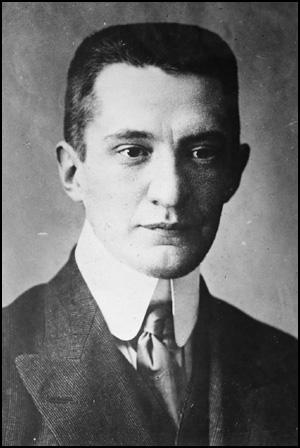
On this day in 1935 the Nazi government passed the Law for the Protection of German Blood and German Honour. Once in power Adolf Hitler began to openly express anti-Semitic ideas. Based on his readings of how blacks were denied civil rights in the southern states in America, Hitler attempted to make life so unpleasant for Jews in Germany that they would emigrate. The campaign started on 1st April, 1933, when a one-day boycott of Jewish-owned shops took place. Members of the Sturm Abteilung (SA) picketed the shops to ensure the boycott was successful.
The hostility of towards Jews increased in Germany. This was reflected in the decision by many shops and restaurants not to serve the Jewish population. Placards saying "Jews not admitted" and "Jews enter this place at their own risk" began to appear all over Germany. In some parts of the country Jews were banned from public parks, swimming-pools and public transport.
Germans were also encouraged not to use Jewish doctors and lawyers. Jewish civil servants, teachers and those employed by the mass media were sacked. Members of the SA put pressure on people not to buy goods produced by Jewish companies. For example, the Ullstein Press, the largest publisher of newspapers, books and magazines in Germany, was forced to sell the company to the NSDAP in 1934 after the actions of the SA had made it impossible for them to make a profit.
Many Jewish people who could no longer earn a living left the country. The number of Jews emigrating increased after the passing of the Nuremberg Laws on Citizenship and Race in 1935. Under this new law Jews could no longer be citizens of Germany. It was also made illegal for Jews to marry Aryans.
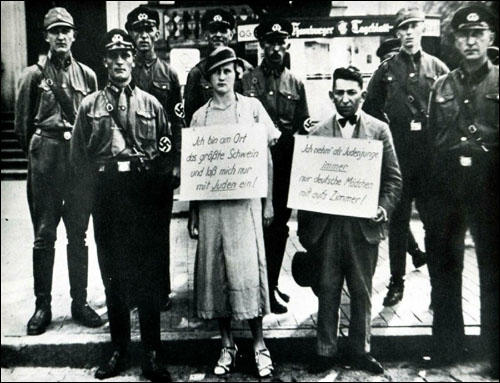
Jews and Gentiles in Hamburg. The woman's sign says: "At this place I am the greatest
swine for I laid with a Jew" The man's sign says: As a Jewish youth I always take
only German girls to my room"
On this day in 1940, 185 German aircraft were destroyed during a raid on London. Aldolf Hitler Hitler then decided to bring an end to the Blitz on London.
During the Blitz some two million houses (60 per cent of these in London) were destroyed by 46,000 tons of high explosive and 110,000 incendiary bombs. In the central London area, only one house out of ten escaped damage of some kind. Over 32,000 civilians were killed and 87,000 were seriously injured during the Blitz. Of those killed, the majority lived in London. Until half-way through the Second World War, more women and children in Britain had been killed than soldiers.
Angus Calder argues that: "The Luftwaffe effected a much overdue programme of slum clearance; after the war, Stepney and Poplar were replanned on the basis of four people living where ten had lived before... Before the war, psychologists had speculated gloomily that bombing would cause an enormous increase in mental disturbances and illnesses; it was even suggested that mental cases might outnumber physical casualties by two or three to one... But the war led to no great increase in neurotic illness in Britain, none, at least, which could be measured in the usual ways. There was no indication of any increase in insanity, and the number of suicides fell, while drunkenness statistics dropped by more than a half between 1939 and 1942."
Between 1939 and 1945 the German air force dropped an estimated 64,393 tons of bombs on Britain, killing 63,635 and injuring approximately 211,000. (This compares to the 264,443 British servicemen and 30,248 merchant seamen who were killed). Around 50% of these casualties came from the period of the Blitz. Overall, air raids on Britain signally failed to live up to pre-war government fears, with each ton of bombs killing or injuring an average of four and a half people.

On this day in 1963, the white racist, Bobby Cherry placed a box under the steps of the Sixteenth Street Baptist Church. Soon afterwards the bomb exploded killing Denise McNair (11), Addie Mae Collins (14), Carole Robertson (14) and Cynthia Wesley (14). Twenty-three other people were also hurt by the blast.
The four girls had been attending Sunday school classes at the church. Cherry was not convicted of this crime until 2002. The Sixteenth Street Baptist Church in Birmingham was used as a meeting-place for civil rights leaders such as Martin Luther King, Ralph David Abernathy and Fred Shutterworth. Tensions became high when the Southern Christian Leadership Conference (SCLC) and the Congress on Racial Equality (CORE) became involved in a campaign to register African American to vote in Birmingham.
Civil rights activists blamed George Wallace, the Governor of Alabama, for the killings. Only a week before the bombing he had told the New York Times that to stop integration Alabama needed a "few first-class funerals."
A witness identified Robert Chambliss, a member of the Ku Klux Klan, as the man who placed the bomb under the steps of the Sixteenth Street Baptist Church. He was arrested and charged with murder and possessing a box of 122 sticks of dynamite without a permit. On 8th October, 1963, Chambliss was found not guilty of murder and received a hundred-dollar fine and a six-month jail sentence for having the dynamite.
The case was unsolved until Bill Baxley was elected attorney general of Alabama. He requested the original Federal Bureau of Investigation files on the case and discovered that the organization had accumulated a great deal of evidence against Chambliss that had not been used in the original trial.
In November, 1977 Chambliss was tried once again for the Sixteenth Street Baptist Church bombing. Now aged 73, Chambliss was found guilty and sentenced to life imprisonment. Chambliss died in an Alabama prison on 29th October, 1985.
On 17th May, 2000, the FBI announced that the Sixteenth Street Baptist Church bombing had been carried out by the Ku Klux Klan splinter group, the Cahaba Boys. It was claimed that four men, Robert Chambliss, Herman Cash, Thomas Blanton and Bobby Cherry had been responsible for the crime. Cash was dead but Blanton and Cherry were arrested.
In May 2002 the 71 year old Bobby Cherry was convicted of the murder of Denise McNair, Addie Mae Collins, Carole Robertson and Cynthia Wesley and was sentenced to life in prison.
